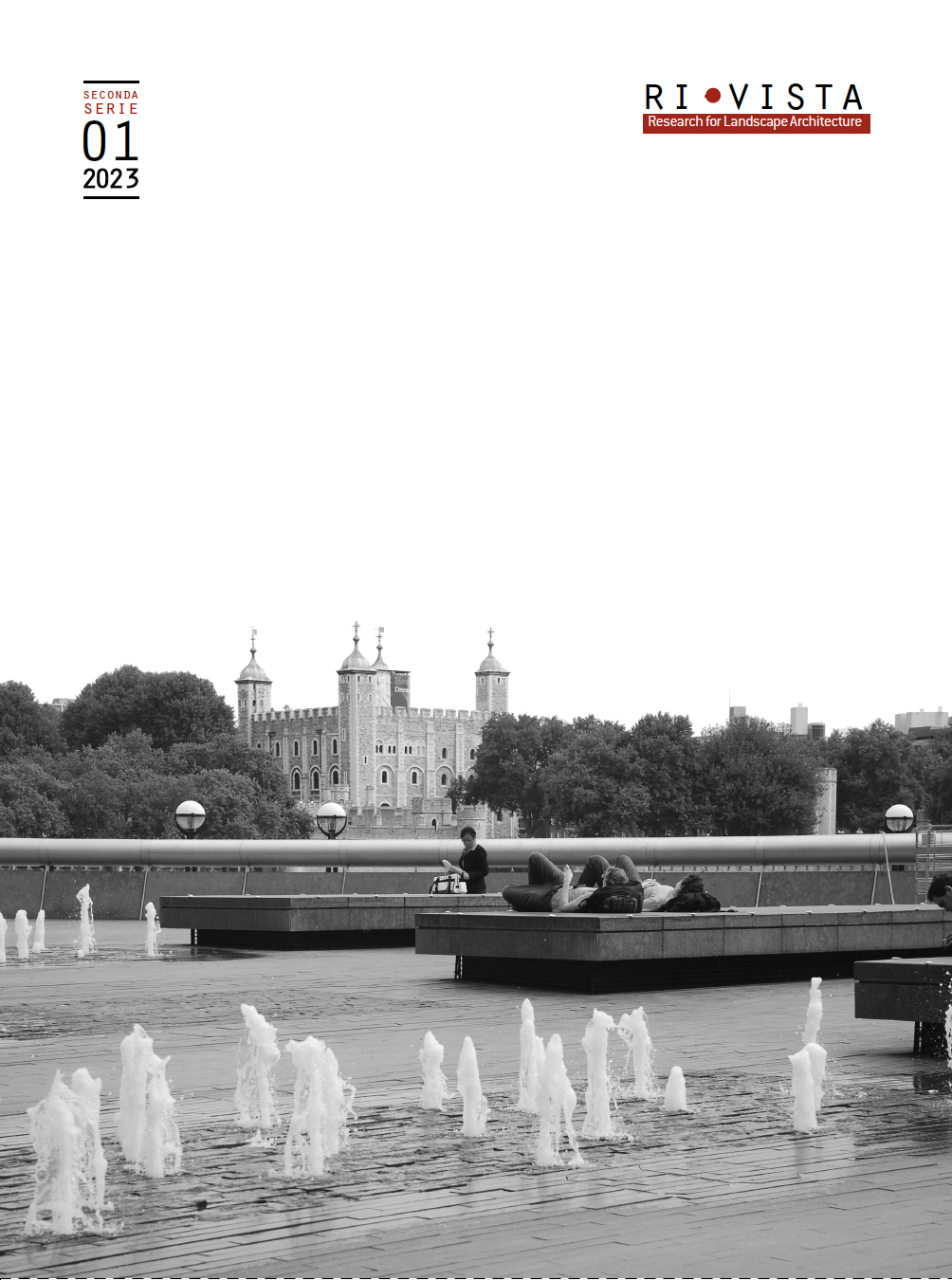Forme d’acqua e codici dell’abitare: Il ruolo dell’acqua nella costruzione dei comportamenti di riscatto sociale ed ambientale degli abitanti di Palermo
Published 2023-12-14
Keywords
- Forme d’acqua,
- comportamenti,
- affioramenti,
- Palermo
How to Cite
Copyright (c) 2023 Maria Livia Olivetti

This work is licensed under a Creative Commons Attribution 4.0 International License.
Abstract
Water in Palermo holds the city in check; it is its main front to the East being the sea. It closes its expansion towards the West with the rivers, streams and springs that flow from the Panormitani mountains. The constant presence of the wind keeps it free of fog, but it cannot dampen the dense and incessant presence of water in the air in the form of humidity. Over the centuries, those who have inhabited the city have had to come to terms with this anwieldy presence, which has been a source of joy in shaping the Conca d'Oro. It is as incredibly fertile today as it was then, and of despair at the flooding of the Kemonia and the marshy stagnation in the Mondello area. The continuous negotiation (which shows no sign of dying out) with water has determined ways of inhabiting the city and induced behaviours within the urban space that are decisive for the quality of life in Palermo. They are much more resilient than the illicit and erroneous management of these forms of water that has taken place over the last 70 years. The cases of the districts of Danisinni and Villagrazia represent some examples from which it is possible to draw strategies and useful elements for the design of urban scenarios in cities in which water has many different forms, from the most evident to the most hidden.





